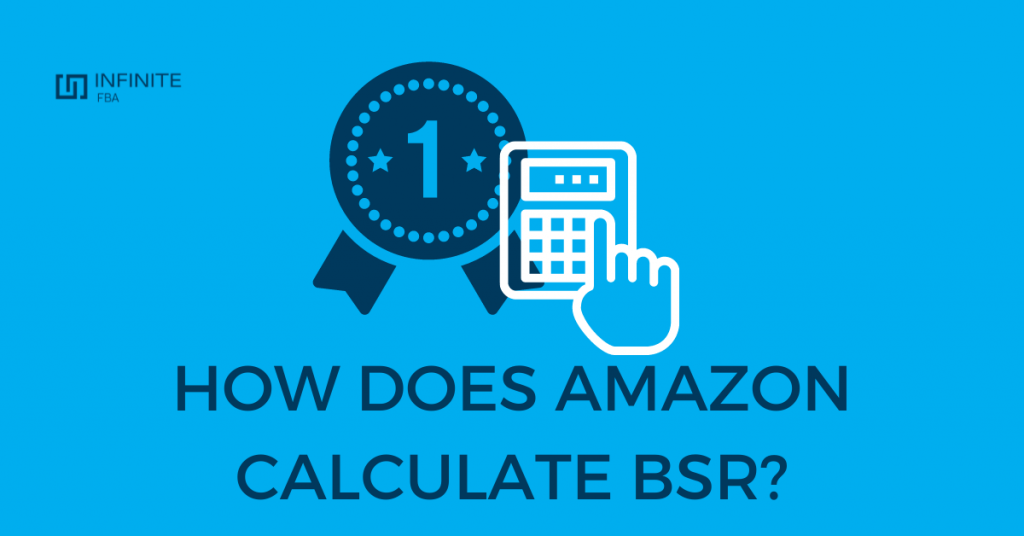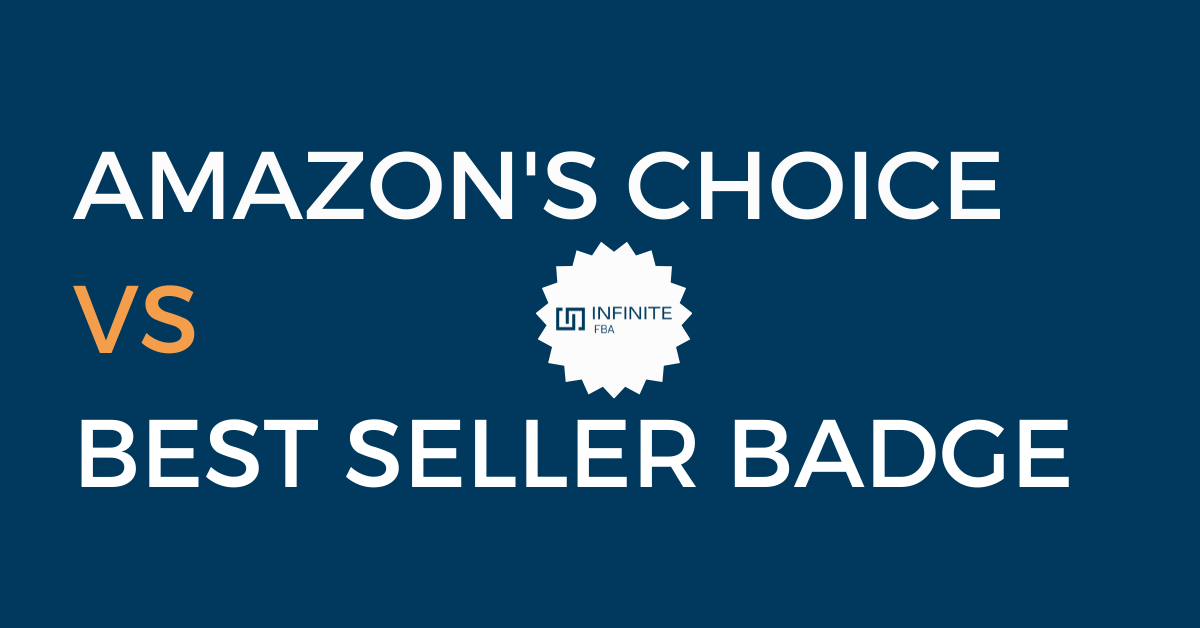Amazon has become a global beacon for the e-commerce industry today, leading it from the front. The company hosts millions of individual businesspersons who sell their products using Amazon’s airwaves. Many of these vendors try to make the best out of the company’s features on the online marketplace. These features include the ‘Amazon’s Choice’ and ‘Best Seller’ badge. These tags are given out by the company for the benefit of customers so that they can choose the best possible product for themselves.
Businesses strive to get themselves on these lists so that they can be preferred over others, leading to increased sales numbers. However, not all vendors realize that there are a few tricks of the trade that they can employ to hold the ‘Amazon’s Choice’ or Best Seller badge they so desire. We will look at the purpose of these two tags, the differences between them, and learn how a seller can get their hands on one of them.
What is the ‘Best Seller Badge’ or tag on Amazon?
The largest online marketplace in the world, Amazon, has several systems in place for its vendors to promote their products. The Best Seller badge is one of these. Amazon’s business model works very similarly to the core principle of the marketplace – if you have a good product, you will reap its benefits. Your product will show up as a Best Seller when it has been sold in large numbers.
Make no mistake, every product on Amazon has a Best Seller Rank (BSR), so technically, all products have a Best Seller badge. However, the lower your BSR, the more sales you make. If Amazon tells you that your product has a Best Seller Rank, then that means it has outsold all other products in that category. For example, if you are selling a #1 Best Seller Electric Trimmer, then that means you have sold the most units of your trimmer in the ‘Electric Trimmer’ category. However, your product might not have done well in the ‘Men’s Grooming Products’ category, and it will not have a #1 BSR there.
Amazon updates its sales data every hour. Therefore, the ranks for every product are also updated hourly. Also, sellers with the top 100 BSR are given the ‘Best Seller’ tag.
How does Amazon calculate BSR?
Amazon has not revealed its algorithm for calculating the BSR for every product very clearly. However, since it is determined by the number of units sold, we can concur that there are two factors at play:
- Recent Sales Data
- Historical Sales Data
Now, to reiterate, we aren’t sure what Amazon does with these numbers, but we are confident that this is the primary data that the company reviews. You automatically get the coveted Best Seller badge if you have sold more units than anyone else in your category.
What is the ‘Amazon’s Choice’ tag?
Another coveted trophy for online sellers on Amazon, the ‘Amazon’s Choice,’ is awarded to products that have passed the company’s keyword algorithm the best. The tag in question seems to propound a stamp, an assurance that Amazon has verified the product. It seems to say, “We are Amazon, and we approve of X product.” However, that is rarely the case.

As we said, the process of earning the Amazon’s Choice badge is not driven by sales. Instead, it is decided by keyword-related searches. Let’s try to illustrate the process of earning this badge. Let’s say a buyer searches for a specific keyword like “office chair” and sees your product and buys it. Then, another buyer does the same thing using the same keyword. Gradually, many people follow in their footsteps. Once you garner enough sales via a specific keyword search, Amazon rewards your product with the ‘Amazon’s Choice’ badge.
Where did the ‘Amazon’s Choice’ tag originate?
It all started in 2015 when Amazon put forth its home assistant ‘Alexa.’ The pathbreaking device is expected to work on voice commands. So, when someone said a command like “Alexa, place an order for an ergonomic work chair,” Alexa automatically searched for an “ergonomic work chair” and placed the order for whichever product had the ‘Amazon’s Choice’ tag.
It is a relatively simple mechanism to understand. For sellers, getting the tag depends on how well your product’s name and descriptions fit with keyword searches.
What is Amazon’s algorithm to determine the ‘Amazon’s Choice’ badge?
Being the tech mogul that it is, Amazon has not stated its algorithm to determine these tags. However, we can venture a good guess about it. The recipient of the badge is not decided by any experts who have used the product and have then recommended it to Amazon. Instead, it is decided by the successful sales and deliveries of the product in question. However, Amazon chooses to use keyword-related conversions for this tag.
There are a few other factors that Amazon considers while awarding the ‘Amazon’s Choice’ badge:
- Immediate Shipping
- Low Return Rate
- High conversion rate from keyword searches
- Eligibility for Prime delivery
- Positive reviews and ratings
All products which satisfy these conditions have a viable shot at earning the badge. The tag is ultimately Amazon’s multi-factor authentication, which tells customers that that specific product is the one that the company can stand behind and vouch for. Customers can look at the tag and be assured that that product will give them maximum satisfaction.
The products which have the ‘Amazon’s Choice’ badge add the most value to Amazon. After all, Amazon is a facilitator between sellers and buyers, and it will only stamp its name on products that do not smear its good name and reputation.
Further reading: How to get the Amazon Choice Badge.
What is the difference between ‘Best Seller’ and ‘Amazon’s Choice’ tags?
The two tags or badges are similar only in their purpose – they are aids for customers. Everything else about these tags is different. They are awarded for various reasons and are determined using different methods. Sellers can articulate their product pages to suit the needs of Amazon’s search engine policies. In a crude way, the Amazon’s Choice badge can pave the way for many products gaining traction on their Best Seller Ranks.
It is almost as if these two Amazon badges are distinct steps at setting a marketplace benchmark, i.e., a product that both customers and Amazon can get behind. Sellers need to frame their product pages in a way that is compatible with Amazon’s keyword search policy. Ultimately, they will gain the Amazon’s Choice tag, which can be a highway to increased sales. In no time, sellers can earn the Best Seller badge, too.
Now, the clear difference between the two tags lies in their method of determination. Both tags are given for different reasons. The Best Seller badge is awarded to the product that sells the most number of units in a category. Every product on the e-marketplace has to fit in a multitude of categories. Sellers are asked to fill out their product pages and list all the categories their product may fit. For example, a chair can fit into categories like “furniture,” “chair,” and “work chair.” If the vendor can sell the most number of units in a particular category, they can hold the honor of being the Best Seller product or ‘#1 Best Seller.’ Sellers have to focus on a singular mission – sell as much as you can.
On the other hand, the Amazon’s Choice badge is given to the product that sells the most units in every keyword search. Just like Amazon has categories for determining BSRs, the company analyzes the keyword searches that customers do to decide the product that gets the Amazon’s Choice badge. With enough conversions from these keyword-related hits, Amazon rewards sellers with the tag.
The two tags can be indicators for an aware customer, but they are unrelated otherwise. Only a good BSR can get the Best Seller badge, while only keyword-related sales can get the Amazon’s Choice tag.
Which tag is better for buyers?
Amazon’s mechanisms to promote competition among sellers have different effects on product sales. They are even awarded to different kinds of products and also help customers gauge their purchases differently. So when it comes down to amazon’s choice vs best seller which is best?
There have been many observed instances where Amazon’s Choice products have had a lower rating than a few other products. Moreover, it is not the only product with a Prime delivery facility. All these are indications of the Amazon’s Choice tag not identifying the best product on the shelf. Sometimes, even the sales numbers of that product are less than the Best Seller Product.
Additionally, some products retain their Amazon’s Choice tag for weeks, while others lose it within a few days. The company has not disclosed why its algorithm lets this happen. On the contrary, the Best Seller badge is built on a firmer foundation of the number of sales. Therefore, the product that has been sold the most must be a trustworthy one.
Customers can look at both tags and choose the item they want to buy. However, the Best Seller tag can provide a better insight into the working of the product than the Amazon’s Choice tag because it is less arbitrary. There have been times when a flashlight with the name “LED flashlight” has shown up in keyword searches for “flashlight” with the Amazon’s Choice badge. However, the same flashlight did not pop up with the badge when the searched keyword was “LED flashlight.” Keyword search hits that drive the Amazon’s Choice tag can sometimes yield skewed results.
Best Seller badges do not disappear even when different keyword searches are used. They make up a fair system of markets, where the vendor who sells the most reaps the most benefits. They are indicators of good products being preferred by the most number of customers. On the contrary, looking at the Amazon’s Choice tag criteria, it seems to be awarded to the products that give the least hassle to Amazon. There is a thin line separating the two tags.
How to make your product a Best Seller on Amazon?
Getting a #1 Best Seller tag might seem like the most daunting task on the internet. However, it really isn’t. Here are a few techniques that businesses have tried and tested in the market with excellent results.
List your product in the proper categories
What matters is that your product gets the tag you so badly want. So, ensure that you list it in the perfect category. Make sure that your product is listed in the general and obvious categories. However, the trick lies in listing your product in a more specific, less competitive category. Less competition in the category will make it easy for your product to take the top spot. Vendors, the difference between listing your chair in “furniture” and “ergonomic work chair” is the #1 Best Seller badge.
Competitive rates and lightning deals
Amazon and its vendors reap benefits off of market competition. As a seller, it is your job to keep the market economics in play by reducing your rates as much as possible. It would help if you did not reduce them too low because that would rob your product’s authenticity. Instead, ensure that your product is the best and most affordable option for a layperson customer. Alternatively, you can promote lightning deals on Amazon. These are deals that last for a limited time but have the potential to raise your sales numbers by a lot.
Retain the #1 BSR (Best Seller Rank)
Stock up your inventory once you hit the #1 mark. Best Seller products have only one weakness – running out of stock. So, ensure that your inventory does not run out as the demand for your product rises. Also, keep the pricing competitive using coupon codes or small discounts. Doing this will make customers gravitate towards your products despite other vendors selling the same items.
How to achieve the ‘Amazon’s Choice’ tag for your product?
Hit the right keywords. Anticipating the customer’s choice of words when looking for your product is the best way to stay ahead of the competition. The perfect keyword is specific and carefully worded but not too specific to target a limited audience. Ensure that the highlights of your product are mentioned on the product pages and in targeted keywords.






